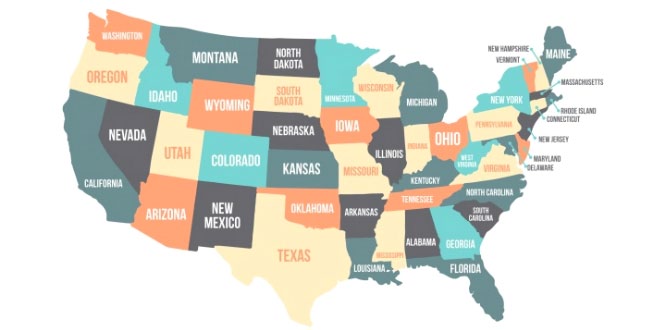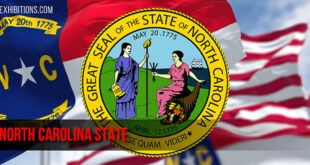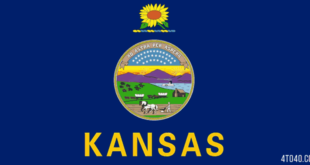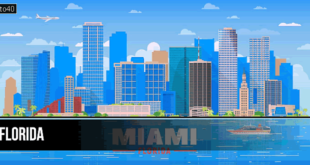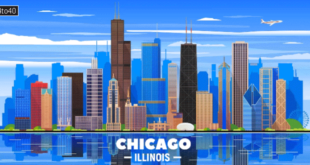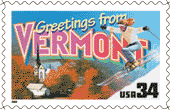 The only New England state without a seacoast, Vermont State traditionally has been the region’s most important agricultural state. Since World War II, however, Vermont’s economy has become increasingly diversified, with recreation and manufacturing assuming greater importance.
The only New England state without a seacoast, Vermont State traditionally has been the region’s most important agricultural state. Since World War II, however, Vermont’s economy has become increasingly diversified, with recreation and manufacturing assuming greater importance.
The first European settlement in present-day Vermont was in 1666, when Pierre de St. Paul, sieur de la Motte, constructed a blockhouse on Isle la Motte in Lake Champlain. The settlement was temporary, however, and the first permanent settlement was by the English in 1724 at Fort Dummer (present-day Brattleboro). Vermont was admitted to the Union as the 14th state on Mar. 4, 1791, after having existed as an independent republic for 14 years.
Vermont State: Land & Resources
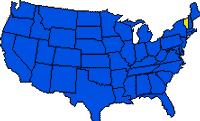 Vermont State’s highest point, Mount Mansfield (1,339 m/4,393 ft), lies about 30 km (19 mi) almost due east of Burlington. The lowest elevation is along Lake Champlain, which lies at 29 m (95 ft) above sea level and drains northward into the St. Lawrence River. Vermont has 80 peaks exceeding 900 m (3,000 ft).
Vermont State’s highest point, Mount Mansfield (1,339 m/4,393 ft), lies about 30 km (19 mi) almost due east of Burlington. The lowest elevation is along Lake Champlain, which lies at 29 m (95 ft) above sea level and drains northward into the St. Lawrence River. Vermont has 80 peaks exceeding 900 m (3,000 ft).
Occupying much of northwestern Vermont, the Champlain Valley lies quite flat close to the lake and was in fact at various times an old lake or seabed during the periods of higher water levels brought about by Pleistocene glaciation. Heavy clay soils mantle much of the area, often making drainage a problem. Toward the mountains to the east, relief gradually increases, and dairy farming gives way to other land uses.
The narrow Valley of Vermont, located south of the Champlain Valley, is traversed by U.S. Route 7 extending from Bennington in the south to Brandon in the north. The valley was a major settlement route into Vermont, and marble is quarried in the north.
The Taconic Mountains extend along the border with New York west of the Valley of Vermont. The highest summit is Mount Equinox near Manchester (1,163 m/3,816 ft). Slate is quarried along the western side. To the east of the valleys and extending the entire length of the state, forming its backbone, are the GREEN MOUNTAINS. The mountains occasionally separate into two parallel ranges, and the western summits are higher.
The largest and also most diverse physical region in Vermont, the Vermont Piedmont, occupies most of the eastern portion of the state and includes the valleys of the White, West, and Black rivers, all of which drain into the Connecticut. With elevations less than 600 m (2,000 ft), the piedmont was an important area of early hill farming. Most farms have long been abandoned, and much of the land has reverted to forestry and recreational uses, although dairy farms still exist.
The Northeastern Highlands region, often referred to as the Northeast Kingdom, is a small, wild, and isolated mountainous area north of St. Johnsbury. It is geologically closely related to New Hampshire’s nearby White Mountains. The highest summit is Gore Mountain (approximately 1,000 m/3,330 ft), and nearly all of the region lies above 600 m (2,000 ft).
Climate
Because of its inland location, Vermont receives little climatic impact from the Atlantic Ocean. An exception is the northeaster, which develops from low-pressure systems off the coast of Maine and generates moist northeastern airflow over the region, in the winter often bringing heavy snowfall to higher elevations. Also, because of its closer proximity to the Atlantic, southeastern Vermont tends to receive more precipitation than the sheltered Champlain Valley.
Precipitation patterns mostly reflect elevation. The Champlain Valley receives an average of 813 mm (32 in) annually, whereas Somerset, at an elevation of 634 m (2,080 ft) in the Green Mountains of southern Vermont, receives more than 1,321 mm (52 in), and mountain summits even more, with snowfall totals of 3,810 mm (150 in) not uncommon.
Temperature is also influenced by elevation and inland location. The average January temperature for the state is -8 deg C (18 deg F), whereas the July temperature averages 19 deg C (67 deg F). Temperatures cooler than these persist at higher elevations, however, and somewhat warmer temperatures prevail in the valleys. Rutland, in the Champlain Valley, has an average temperature in January of -6 deg C (21 deg F) and in July of 21 deg C (70 deg F). Seasonal extremes prevail because of the lack of any significant marine influence. The record low temperature for Vermont is -46 deg C (-50 deg F); the record high of 41 deg C (105 deg F) occurred at Vernon on July 4, 1911. Growing seasons in the Champlain Valley are 150 days or more, but at higher elevations and in enclosed valleys some marginal farms have a growing season of only 90 days or even less.
Vermont State: History
When Samuel de CHAMPLAIN traversed the lake that bears his name in 1609, Vermont was hunting territory for various ALGONQUIN and Iroquois tribes (see IROQUOIS LEAGUE), and Algonquin groups such as the ABNAKI and MAHICAN were probably already permanent inhabitants of western parts of the state. In any event, most Vermont Indian place names are of Algonquin origin.
The Champlain Valley was recognized early as the strategic lowland corridor between the French settlements to the north and the British ones to the south. The sieur de la Motte built a blockhouse on Isle la Motte in 1666, and Captain Jacobus de Warm from Albany constructed a trading post on Chimney Point in 1690. A French fort was built on the same site in 1730, and the ruins of its chimneys that stood for years gave the place its unusual name. Of the many later British, French, and American fortifications built throughout the valley, CROWN POINT and TICONDEROGA, both in New York State, are the largest and best known.
Claims of Massachusetts, New Hampshire and New York
Under the charter of the Massachusetts Bay Colony, Massachusetts had been granted the southern half of Vermont and southwestern New Hampshire, and to protect its settlements the colony erected a series of forts along the Connecticut River. Fort Dummer, the first permanent white settlement in what was to become Vermont, was built in 1724 near the present town of Brattleboro.
In 1741, however, George II ruled invalid Massachusetts’s claims in Vermont and New Hampshire and fixed the northern boundary of Massachusetts at its present location. Gov. Benning Wentworth of New Hampshire saw this as an opportunity to grant lands west of the Connecticut River as far as a line about 30 km (20 mi) east of the Hudson River, the western boundary of both Massachusetts and Connecticut. In 1749 he granted the town of Bennington in southwestern Vermont, and subsequently, by 1764, he had granted a total of about 135 towns, making Vermont known as the “New Hampshire Grants.”
But Wentworth’s real-estate activities upset Gov. George Clinton of New York, who, citing early charters to the duke of York, claimed that New York extended eastward to the Connecticut River. The king was asked to render a decision in the dispute, but wartime activities (see FRENCH AND INDIAN WARS) postponed judgment until 1764, when George III and his council declared “the western banks of the river Connecticut to be the boundary line between the said two provinces of New Hampshire and New York.” New York thereupon declared all of Wentworth’s 135 grants null and void and began to make new grants to new grantees of lands already held and settled under New Hampshire title.
Independence and Statehood
Settlers were thunderstruck and angered, and most were fearful of losing their lands. Violent outbreaks against New York authority were common, especially in western Vermont, where the GREEN MOUNTAIN BOYS organized by Ethan ALLEN in 1770-71 harassed holders of Vermont land with New York titles. As the only organized military group in Vermont, the Boys later were able to support the cause of the colonies against the British, notably by helping Benedict Arnold capture the British fortress at Ticonderoga in 1775.
With the Declaration of Independence on July 4, 1776, Vermont settlers pondered their future. In a series of conventions the idea of independence was gradually accepted, and at Windsor on July 2-8, 1777, 70 delegates unanimously adopted a constitution that was almost an exact replica of Pennsylvania’s. Vermont became the independent Republic of New Connecticut, alias Vermont, but the name New Connecticut was rarely used. After 14 years as an independent republic, Vermont was admitted to the Union as the 14th state on Mar. 4, 1791.
The 19th Century
Earliest industries in the new state included the production of potash and pear ash, largely for the Canadian market because of the northward drainage of Lake Champlain. During the War of 1812, prosperous smuggling developed between Vermont and Canada, at the same time that America’s first battleship, the Saratoga, built at Vergennes, was being sent into action under Commodore Thomas MACDONOUGH on Lake Champlain. The Battle of Plattsburgh in September 1814 gave Americans final control of the lake.
The Jefferson Embargo preceding the War of 1812, the war itself, and the opening (1823) of the Champlain Canal connecting Lake Champlain to the Hudson River all contributed to Vermont’s growing orientation to the south and away from the north and Canada. The canal made it possible for Vermont farmers to ship goods to New York City, stimulating agriculture and wool production, until the 1860s when dairy farming began to dominate. During the Civil War the St. Albans Raid occurred (1864) when 22 Confederate soldiers based in Quebec robbed banks in St. Albans and fled to Canada. By the early 20th century, manufacturing replaced agriculture as the dominant economic activity.
A New Look
Today the southern orientation of Vermont has been reinforced dramatically by a changing population and socioeconomic character of the state. Retirees, second-home owners, and new resident commuters from Connecticut, New York, and Massachusetts have settled in the state. The population is growing modestly through migration, tourism is booming, and the stability and quiet so characteristic of the first 175 years of statehood is rapidly disappearing from the Green Mountain State.
Vermont State: Land
- Area: 24,903 sq km (9,615 sq mi); rank: 45th.
- Capital: Montpelier (1990 census, 8,247).
- Largest city: Burlington (1990 census, 39,127).
- Counties: 14.
- Elevations: highest–1,339 m (4,393 ft), at Mount Mansfield; lowest–29 m (95 ft), at Lake Champlain.
 Kids Portal For Parents India Kids Network
Kids Portal For Parents India Kids Network
